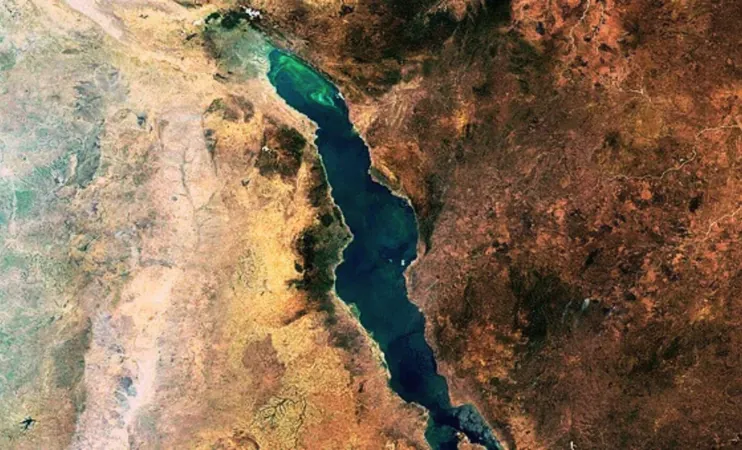
Africa Is Splitting: A New Ocean Emerges at Unprecedented Speed
2025-06-28
Author: Olivia
A Geological Phenomenon Underway in East Africa
In one of the most dynamic geological hotspots on Earth, East Africa is undergoing a dramatic transformation that could redefine the continent's landscape. Beneath the surface, tectonic plates are gradually pulling apart, and scientists are now realizing that this slow-motion disaster is happening at a much faster rate than previously anticipated.
The East African Rift: A Fault Line with a Future
The East African Rift System, stretching from the Red Sea to Mozambique, marks the boundary between the African and Somali tectonic plates. While these plates drift apart at a seemingly mild rate of 0.8 centimeters per year, this process is anything but slow. Powerful geological events—like volcanic eruptions and earthquakes—can accelerate rifting, creating a dramatic shift in the Earth’s crust.
A Sudden Rift in Ethiopia's Desert
The Afar region in Ethiopia is where this rift is especially pronounced. It sits at the confluence of three tectonic plates—African, Somali, and Arabian—making it one of the few locations globally where scientists can witness a continent literally splitting in real time. An astonishing event in 2005 illustrated this: a 35-mile-long crack emerged overnight, accompanied by over 420 earthquakes. This fissure, up to 10 meters deep, suggested that tectonic shifts once thought to unfold over eons could happen in mere days.
The Dawn of a New Ocean
As the rift widens, East Africa is gradually being cleaved from the rest of the continent. Experts predict that millions of years from now, the Horn of Africa will evolve into an island surrounded by a new ocean. The geographical shifts have already begun, setting the stage for the formation of deep valleys and rugged terrain across thousands of kilometers.
This eventual separation will drastically alter the regions of Somalia, Djibouti, and Kenya, creating new coastlines stretching from the Red Sea to Tanzania. Such a monumental change could open up fresh economic avenues, granting landlocked nations like Zambia and Uganda newfound access to maritime routes, potentially skyrocketing regional commerce.
The Science Behind the Splitting
The rifting process is not a straightforward affair; it's marked by a series of explosive events driven by underground pressure. In 2005, the sudden crack was attributed to rising magma creating immense stress within the Earth's crust. Here, the unique geology of the converging Nubian, Somali, and Arabian plates is at play, with the Arabian plate retreating from Africa at about one inch per year, while the other plates separate more slowly at rates between 0.2 to 0.8 inches annually.
Satellite technology and GPS are revolutionizing our understanding of this geological phenomenon, allowing scientists to monitor tectonic movement with incredible precision. This data is refining timelines and offering insights into the future of East Africa as it continues to reshape itself on the global map.









 Brasil (PT)
Brasil (PT)
 Canada (EN)
Canada (EN)
 Chile (ES)
Chile (ES)
 Česko (CS)
Česko (CS)
 대한민국 (KO)
대한민국 (KO)
 España (ES)
España (ES)
 France (FR)
France (FR)
 Hong Kong (EN)
Hong Kong (EN)
 Italia (IT)
Italia (IT)
 日本 (JA)
日本 (JA)
 Magyarország (HU)
Magyarország (HU)
 Norge (NO)
Norge (NO)
 Polska (PL)
Polska (PL)
 Schweiz (DE)
Schweiz (DE)
 Singapore (EN)
Singapore (EN)
 Sverige (SV)
Sverige (SV)
 Suomi (FI)
Suomi (FI)
 Türkiye (TR)
Türkiye (TR)
 الإمارات العربية المتحدة (AR)
الإمارات العربية المتحدة (AR)